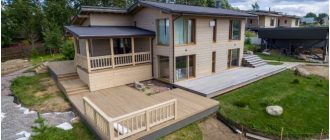This article will discuss in detail the concrete and plastic drainage well for storm sewer as one of the options for a system designed for country sites. You can get acquainted with the main classification, learn the characteristics of structures, their features, advantages and disadvantages. This material will help you understand the technology of arrangement of such a system on the territory of your summer cottage.
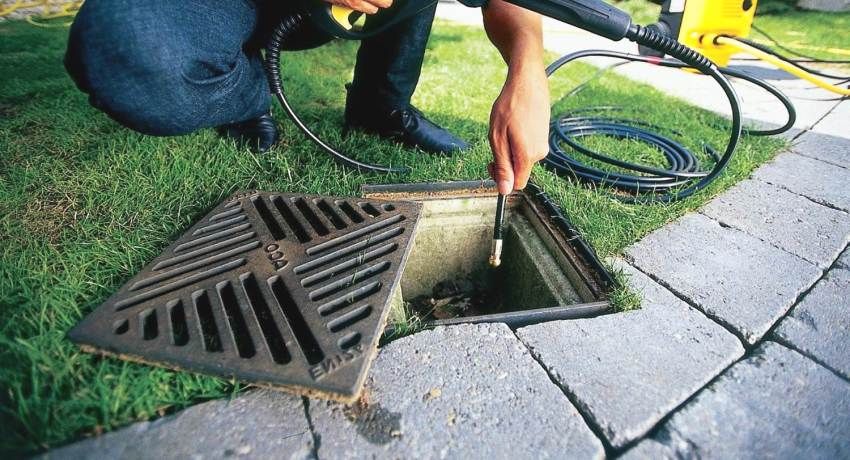
Concrete and plastic drainage well for storm sewers: classification
After the spring thaw or heavy precipitation, water may accumulate on the site. If the liquid stays at the house for a long time, the moisture can erode the soil under it and destroy the foundation. Exposure to increased humidity leads to the formation of cracks on the base of the building and on its walls, which ultimately can lead to collapse.
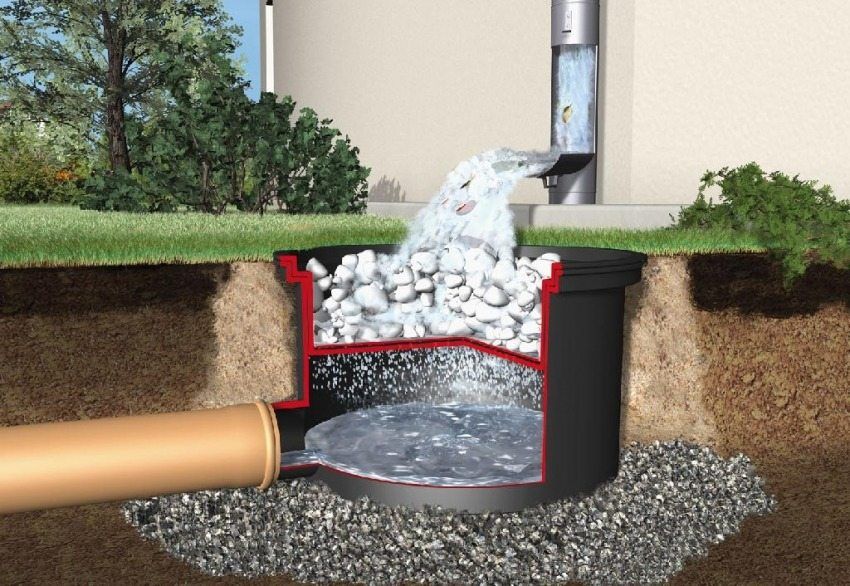
Note! Organization outdoor storm sewer on the site completely solves this problem and eliminates all the consequences associated with it. All excess moisture will drain into the well, from where it will be discharged naturally.
If you properly design and perform storm sewers in a private house, this system will collect rain and melt water from the surface of the soil and rooftops, as well as organize effective removal of excess moisture from the site.
The place for removal of fluid from the storm system can be:
- soil (construction like a septic tank);
- the nearest reservoir (river, lake);
- ravine;
- home sewer system.
There are two technologies for storm sewers in a private house. One type of system refers to the linear type of structures, the other to the point type.

The design, acting on a linear basis, provides for the collection and transportation of excess moisture not only from roofs, but also from other surfaces on the site:
- parking lots;
- blind areas;
- paved paths, etc.
In contrast to the point type sewage system, in this case not gutters, but gutters are used to collect water. These elements of the system are mounted flush with the pavement in accordance with the overall slope. The design is equipped with filters and covered with special grids.
At the heart of the point of sewer is a few rain receivers. They collect the liquid flowing down the gutters from the roof of the building. The secret of installation is to correctly connect all the elements of the system into one large trunk. On it, the water will move to the drainage wells for storm sewer.
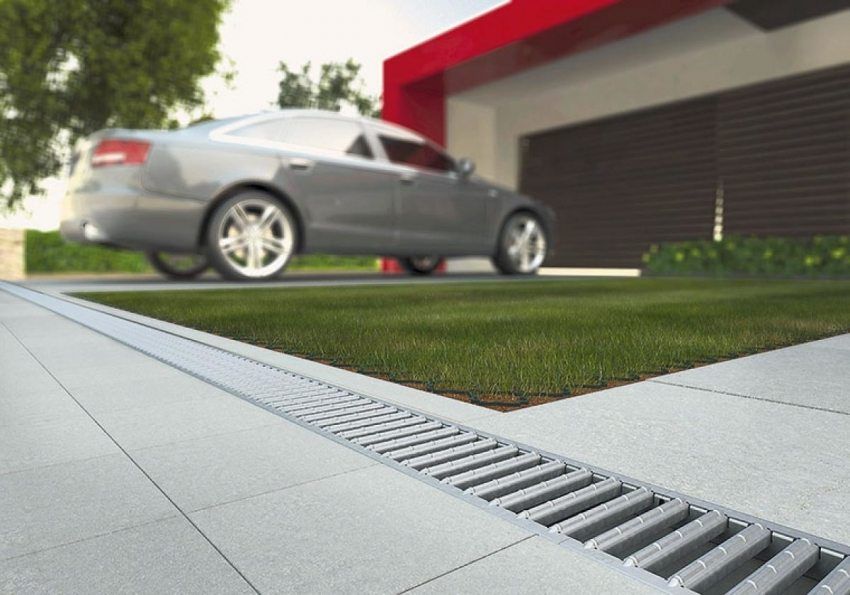
Then, the preliminary cleaning of the fluid and its discharge into a specially designated place are carried out.
Helpful advice! When installing rain receivers, be sure to install grilles on them, as well as filtering sand trap for storm sewer. These items will hold up large debris and sand. The price of sand traps ranges from 800-2500 rubles / piece.
First of all, the classification division of storm wells into groups is carried out on the basis of the material from which they are made. Material production directly affects the properties of the well and determines its characteristics, both technical and operational. The most common and most used systems are plastic and concrete products.
The classification of drainage wells for removal of groundwater according to the type of construction is as follows:
- absorption;
- viewing;
- reception rooms.
Plastic types of systems have an extended range of designs, thanks to the practicality and versatility of the material from which they are made.
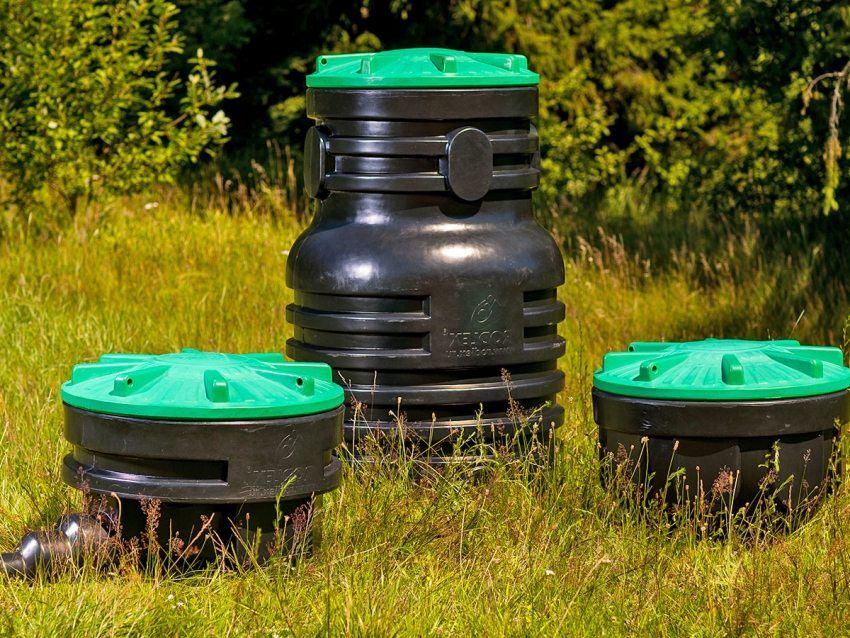
In addition, the design of storm sewage treatment facilities can be:
- monolithic (concrete);
- folding (plastic).
In each case, you are dealing with certain advantages and disadvantages.
The wells with a folding design, made on the basis of plastic, consist of several elements:
- bottoms;
- mines;
- sewer manhole.
The mine belongs to the most important part of the product. It is a smooth, and in some cases, corrugated pipe for storm sewer with thick walls and large diameter.
Helpful advice! Use pipes with a corrugated surface in your work, since they reduce the loads that affect the bottom of the well during its operation.
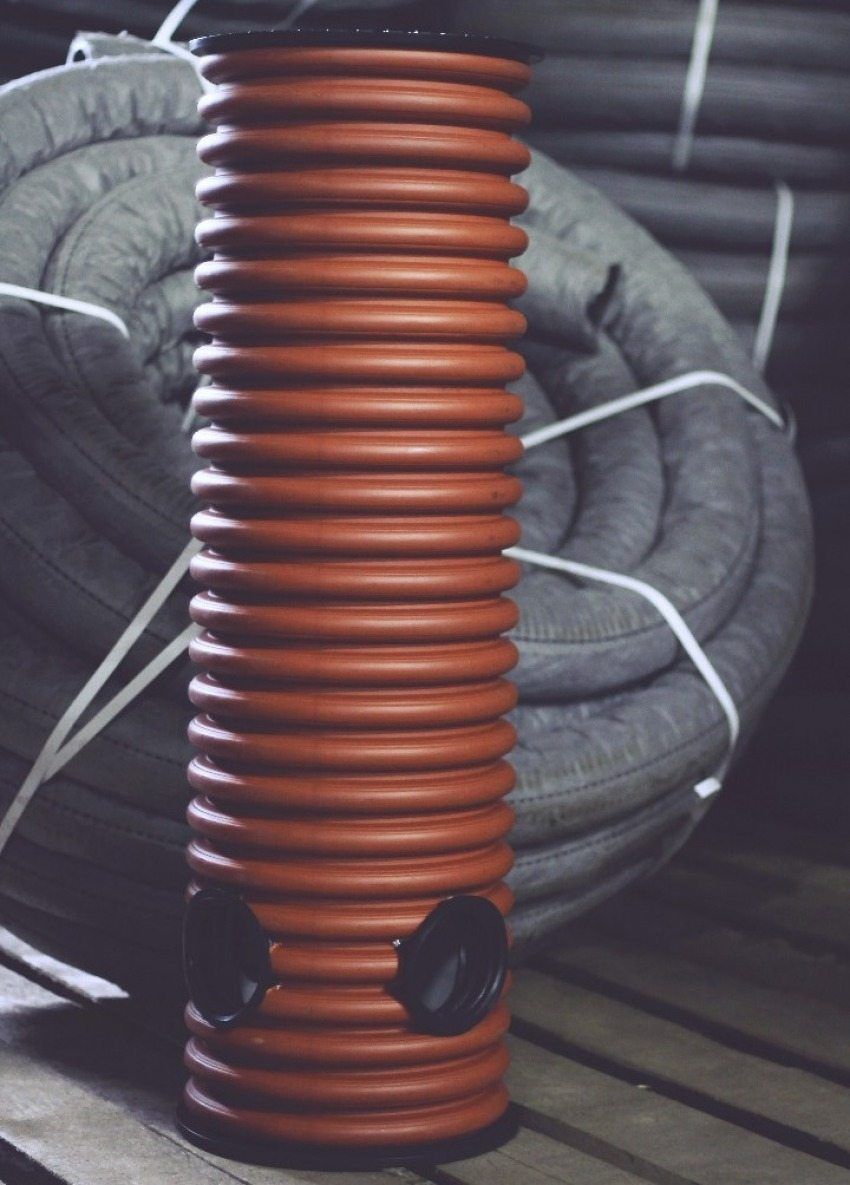
For the manufacture of the bottom and manhole in such structures, manufacturers use material of artificial origin, with an increased margin of safety – polypropylene. Depending on the installation site of the drainage well, a hatch of a certain level of strength is selected. Some of them are completed for the convenience of stairs.
On sale you can find hatches designed for:
- park areas;
- sidewalks and footpaths;
- highways;
- highways located within the city limits.
As a material for the manufacture of plastic wells, three types of raw materials are used:
- polyethylene;
- polyvinyl chloride;
- polypropylene.

The choice of material is also dictated by the location of the system and its purpose. If desired, the installation of a drainage pump for a well can be made during the installation of the product.
According to the type of installation, submersible and surface pumps can be used to maintain drainage systems. Submersible models during installation are placed directly in the water column with a cable. Reaching the required mark, the device is fixed. This type of pump is located at a depth of approximately 50-100 cm at the depth of the drainage well with a distance from the bottom.
Advantages of submersible models:
- compact size and light weight;
- long terms of effective service without service;
- a wide range of possibilities (the ability to work with liquids of different degrees of contamination);
- high efficiency (40 m? / h);
- float protection simplifies use;
- the device can be automated by connecting to other systems.
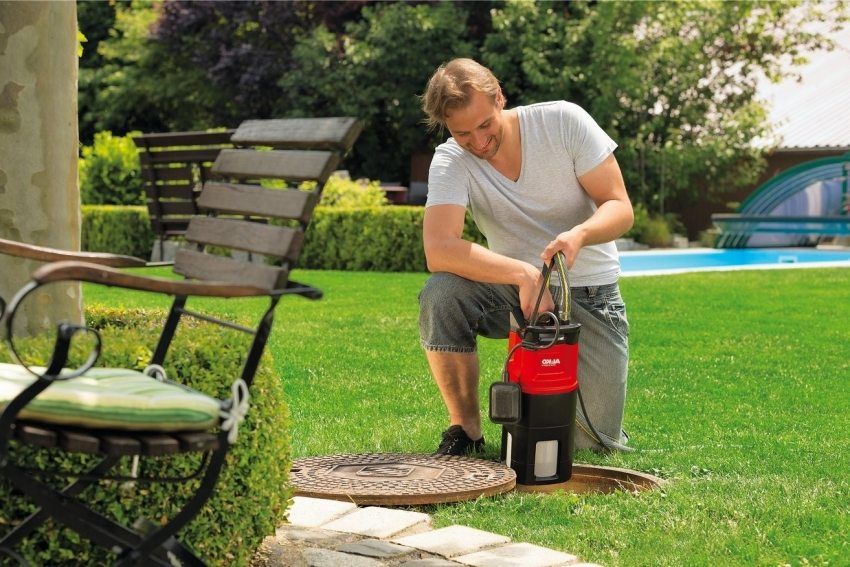
The disadvantages of the devices include a small pressure, especially if the pump is installed at a considerable depth. When a liquid is pumped, the process of filtering water is impossible, and this complicates the operation of the system.
Note! Submersible models can have a vibratory or centrifugal principle of operation. In the first case, you get accessibility, in the second – high efficiency.
In drainage systems for groundwater disposal, surface pumps can also be used, which are characterized by:
- high pressure;
- long service life;
- affordable cost;
- economy in terms of energy consumption.

Surface pumps have drawbacks: high noise levels during operation and limitations on the depth of suction. Such devices can not effectively carry out the work if the depth of the well exceeds 8 m.
Inspection wells are used to visually monitor the state of the system. Thanks to this you can:
- control the operation of the system and its uninterrupted operation;
- perform maintenance work;
- Timely clean the pipes and keep track of the condition they are in.
Such a well has a standard structure. The exception is the bottom, which in this case has a tray part where the grooves are located.
Absorption-type wells are used when the site does not have the conditions for draining water. Such models do not have in their composition the bottom. At the bottom of the structure there is a sand and crushed stone cushion, which perform the function of filters, passing purified water into the ground.

Under such conditions, a ground collapse may occur. To prevent this, experts recommend the use of round plastic wells. If construction of an absorption well of rectangular or square shape is planned, attention should be paid to other materials, for example, brick or concrete.
Receiving wells storm sewers act on the principle of accumulation of fluid, followed by its discharge. For these purposes, not only the drainage system can be used, but also natural reservoirs, as well as ditches.
Note! Such constructions necessarily have a deaf bottom and a lid without openings, since, accumulating in the system, water can completely fill it.

At arrangement of a similar drainage well from plastic, the inset of pipes is carried out at a certain level. At least 40 cm should be removed from the bottom to provide enough space for the sedimentation of sand and other impurities that may be contained in the water.
Owners of country houses prefer to buy a drainage plastic well, than to engage in complex installation of concrete structures. And there are several explanations for this, since plastic structures:
- have low weight, and, therefore, their installation does without the use of special equipment and considerable effort;
- completely impenetrable;
- differ in the increased endurance (service life reaches 40 years);
- not afraid of exposure to weather conditions;
- easy to operate.
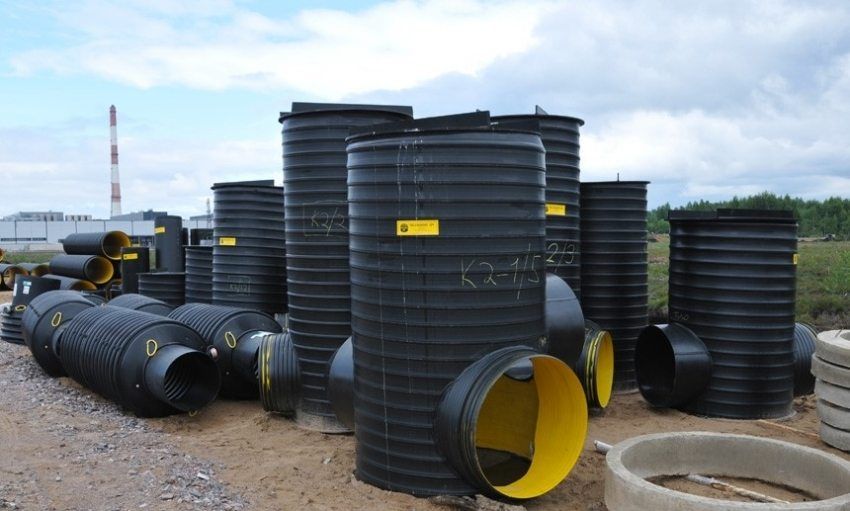
Despite the extensive list of advantages over concrete wells, some drawbacks are inherent in plastic systems:
- high price compared to concrete products;
- when constructing storm sewage, plastic wells can be installed to a depth of no more than 15 m. There are no significant depth restrictions with respect to concrete structures;
- All installation work must be carried out carefully and carefully, as there is a chance to deform the plastic.
Average price of plastic drainage wells:
| Type of construction | Dimensions of the well, cm | price, rub. |
| Drainage | 34×100 | 2600-2850 |
| Accumulative (polyethylene) | 60×100 | 8200-8700 |
| Lookout | 30×60 | 2300-2600 |
| Distributive | 80×100 | 8650-9200 |
As in the case of plastic systems, wells made on the basis of concrete rings perform the function of draining water. The modern range of designs includes similar types of inspection, storage and absorption wells, operating on the same principle as the previously described plastic products.
Note! There is one more kind of wells from concrete – rotary. When organizing storm sewage in a private house with their own hands, such structures are installed in areas where the pipes of the system are connected at an angle.
The advantages of concrete products:
- installation is carried out in one day;
- constructions are completely hermetic;
- do not need constant care;
- have low cost;
- they do not impose special requirements on the type of soil (they can be established even in areas with heaving or mobile soil).

The disadvantages include only a lot of weight, which is why work on the installation of a drainage well from concrete rings is not complete without the involvement of specialists and the use of heavy machinery.
Prices for the construction of a well of concrete:
| Design name | Ring type | Total amount, m? | Height, m | Diameter, m | price, rub. |
| Well of 3 rings | COP 10-9 | 2.1 | 2.8 | one | 25,000 |
| Well of 4 rings | COP 10-9 | 2.8 | 3.7 | one | 30,000 |
| Well of 2 rings and additional rings | COP 15-9 | 3 | 2.4 | 1.5 | 30,500 |
The price of drainage wells made of concrete listed in the table includes the cost of materials and payment for the work of specialists.
Maintenance and care of the storm system is to regular cleaning, as well as the elimination of blockages and sand accumulations in the pipes and gutters. For these purposes, it is necessary to remove the grating. Extended sites are cleaned through the manholes.
